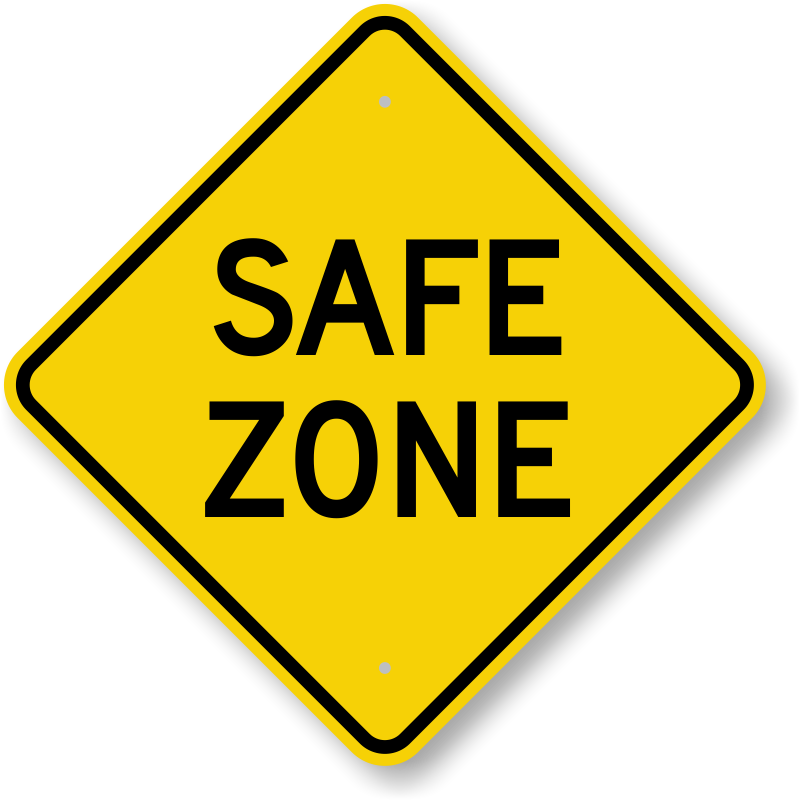Creating a Safe Space for our kids to be OK with their not-OK
by Pete Hall
Recently, my sister-in-law, Rebecca, obtained a position teaching middle school health. After successfully owning and running a small business for several years, she was excited to get back into the classroom. I knew she’d do well, because it takes a special person to teach middle school – and an exceptional one to be good at it – and she’s an exceptional person.
A few weeks into the school year, Rebecca called me, exasperated, wondering what she had gotten herself into. “The classroom is chaos, the kids don’t listen to me, I’m always racing to keep up with the curriculum, and did I mention the kids? I don’t think they like me,” she said.
We talked and processed for a few minutes, and then I asked her, “What’s stressing you the most? What’s the most important thing?”
With nearly no hesitation whatsoever, Rebecca replied, “Relationships. Creating a safe space for my kids, so they can be who they are. Building a community in my classroom.”
“And if you don’t yet have relationships established with all your 150 kids, and if you haven’t yet built that community, what’s your game plan?”
Again, her immediate response: “Work on those relationships and cultivate that community feeling. Okay, I’m not giving up. I just thought it’d happen quicker.”
Fast-forward to a couple weeks later. When asked how the school year was progressing, Rebecca smiled and answered, “Well, I know one special thing about each of the students in my class, and I believe every single one of them knows how to ask for what they need, when they need it. Also, I actually think they’re starting to care about each other and how they’re doing. Relationships and community.”
And the curriculum and instruction piece? “We’re rolling. There will always be bumps in the teaching road, but as long as we lean on each other along the way, we’ll make it.”
Welcome to the Nest
What Rebecca has created and nurtured in her classroom is, for all intents and purposes, a nest. Birds build nests to create a safe space for their little birdlings to grow, to develop, to learn, to experiment, to build their sense of self-confidence and purpose and belonging and wonder…okay, wait, I may have blurred the lines of the metaphor.
In any given classroom, cafeteria, ballfield, office, hallway, or nook and cranny of a school, our birdlings – children – need to have a safe space to grow, develop, learn, and all those other important elements of becoming full-fledged members of our communities. In my work with Kristin Souers and our team, designing structures and interventions to mitigate the effects of childhood trauma, we refer to this school-based nest as a Culture of Safety.
A Culture of Safety
Why is this so important, and what did Rebecca know that prompted her to emphasize the cultivation of relationships and a safe space for her students above all else?
Ever since a landmark study in the late 1990s (see Anda & Felitti, et al), we’ve become more and more aware of the prevalence and consequences of Adverse Childhood Experiences, also known as ACEs. The original list of studied events has grown from 10 (including abuse, neglect, and “household dysfunction” like having an incarcerated parent or the presence of mental illness in the home) and now accounts for having a parent deployed, living in a war zone, being a victim of bullying, witnessing violence, and any of a host of other debilitating, not-OK experiences that we collectively refer to as childhood trauma.
The definition Kristin Souers and I embrace for “trauma” is this: “an exceptional experience in which powerful and dangerous events overwhelm a person’s ability to cope” (Rice & Groves, 2005).
Because we cannot stop trauma from happening, we must focus our attention and energy on something we can influence: the setting – the nest – in which our students spend a tremendous amount of their time. As Rebecca noted, a foundational characteristic of a positive, productive classroom setting is the establishment of a Culture of Safety.
Not only must our students be safe, they must feel safe.
There are biological reasons for this need for safety, especially in a school setting. When children are in danger – whether that danger is real or perceived – their brains operate from the limbic system, the home of the flight-fight-freeze response center. In that mode, which we refer to as our “downstairs brain” (thanks to Dan Siegel at UCLA for this terminology), our students are naturally oriented to survive, not thrive. Until they feel safe again, they will not be learning-ready.
Our charge, as adults and professionals, is to help our young people to build the resilience needed for them to access the cortex (the “upstairs” part of the brain where we think, reason, and make sense of the world), so they can respond to even the most impactful events with understanding, patience, and rational behaviors – helping them to distinguish between danger and the perception of danger.
What Rebecca has learned, and what we’re trying to help educators (and other caregivers in the many fields that care for kids, including the most important population: parents) understand is the connection between strong relationships and a safe space when supporting children who have experienced – and/or who are experiencing – some horrific and traumatic events. Safety, security, routine, belonging, love…these are the most effective strategies for helping children, especially those who have experienced traumatic events, to become learning-ready and oriented towards lifelong success.
Read more about the three elements of a Culture of Safety – safety, predictability, and consistency – in a series of blogs at www.FosteringResilientLearners.org.
Pete Hall, a former school principal, teamed with Kristin Souers, a licensed mental health counselor, to write Fostering Resilient Learners (ASCD, 2016) and Relationships, Responsibility, and Regulation (ASCD, 2019). You can contact him via email at PeteHall@EducationHall.com and follow him on Twitter: @EducationHall.













